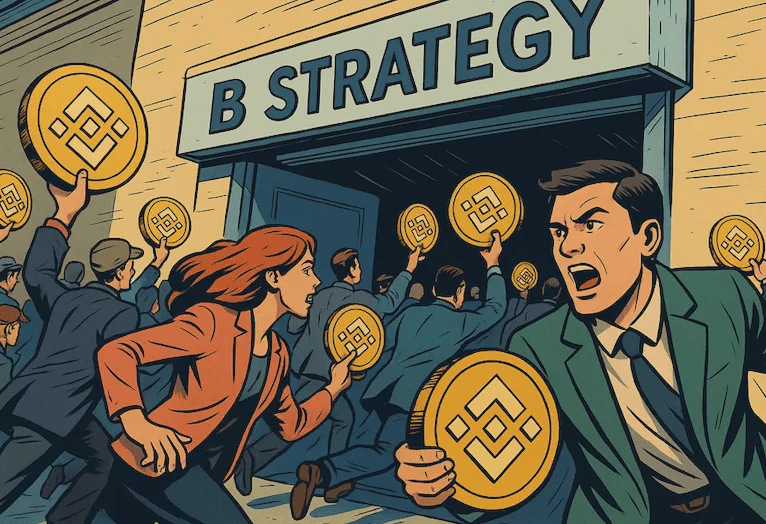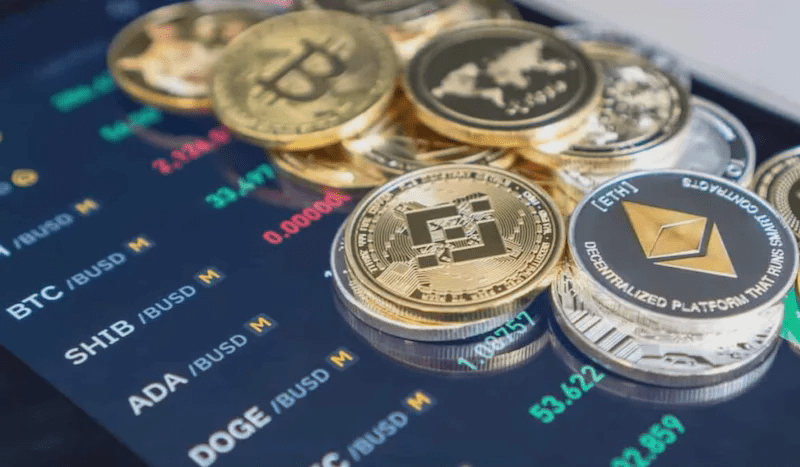The current cryptocurrency market is playing out a contradictory drama. On one hand, Bitcoin has fallen from its historical high of $124,000, and the market is shrouded in the gloom of panic selling, with red lights flashing on various chain indicators. On the other hand, a powerful tide of institutional capital is flooding in at an unprecedented scale, with global listed companies no longer satisfied with merely adding Bitcoin to their balance sheets but instead launching a buying frenzy for mainstream public chain tokens, aiming to create one 'Micro Strategy' after another.
This wave of institutional 'hoarding' is in stark contrast to the generally cautious market sentiment and raises a core question: before regulators greenlight more cryptocurrency ETFs (exchange-traded funds), will the bets placed by these listed companies be enough to ignite the long-awaited 'altseason'?
Micro Strategy model
Once upon a time, Micro Strategy's strategy of treating Bitcoin as a primary reserve asset was viewed as a radical case; today, this model is being replicated and applied in mainstream public chain ecosystems like Solana, BNB, and Sui.

Firstly, Solana is transitioning from a network driven by retail investors to a platform supported by large-scale institutional backing. Recently, crypto investment giant Pantera Capital plans to raise up to $1.25 billion, aiming to acquire a company listed on Nasdaq and transform it into a cryptocurrency reserve company named 'Solana Co.', dedicated to holding and managing SOL tokens.
This capital feast is not a solo performance by Pantera. Digital asset management firms Galaxy Digital, crypto venture capital firm Multicoin Capital, and market maker Jump Crypto are also negotiating to raise about $1 billion to acquire a listed company, making it an investment vehicle for SOL on Wall Street. These actions undoubtedly cast a heavy vote of confidence in Solana's long-term value but also raise concerns in the market regarding the liquidity risks posed by excessive concentration of holdings in a single company.

Secondly, the native token of BNB Chain, BNB, has also become a target pursued by institutions. The digital asset investment company B Strategy, co-founded by former Bitmain CFO Max Hua and Metalpha co-founder Leon Lu, recently announced an ambitious plan: to raise $1 billion to establish a BNB financial strategy company listed on Nasdaq.
The plan is not merely to hold BNB but aims to become the 'Berkshire Hathaway' of the BNB ecosystem, supporting the core technology development and community growth of BNB Chain through capital and resources. Notably, this plan has also received strategic support from YZi Labs, a family office established by Binance founder Zhao Changpeng (CZ), although CZ clarified that they are not the lead investor. This move aims to elevate BNB from a Web3 tool to a cornerstone asset recognized by traditional capital markets.

In addition, another noteworthy case comes from the Sui ecosystem. The listed company Mill City Ventures III officially renamed itself to 'SUI Group Holdings' on Nasdaq after accumulating over 81 million SUI tokens through a $450 million private placement on August 26, and adopted a new stock code 'SUIG'.
This move has been described internally as a 'branding battle', deeply binding the company's value with the future of the Sui ecosystem through its name and code. It provides traditional stock market investors with a regulated, highly liquid channel to participate in the development of the Sui blockchain, but it also means that the company's stock price will be directly affected by the dramatic fluctuations in SUI token prices, which is undoubtedly a test for shareholders' nerves.
Despite the enthusiasm of institutional capital, the current retail market presents a different scene. After Bitcoin's decline from its peak, market sentiment has clearly turned pessimistic. This short-term market weakness contrasts sharply with the long-term institutional layout, revealing significant cognitive and temporal framework differences between professional investors and ordinary market participants.
Widespread 'altseason'

Against the backdrop of institutions betting on specific altcoins, the anticipated widespread 'altseason' has yet to arrive. In this regard, analysts from the exchange Bitfinex have offered critical insights: it seems unlikely that the market will experience a broad rally before more altcoin ETFs are approved.
Analysts believe that although Bitcoin's market share has recently declined, the current market reflects a 'weaker risk appetite'. Institutional purchasing behavior is highly strategic and targeted, rather than a comprehensive 'risk-on' mode. A true 'rising tide lifts all boats' scenario requires products that can bring in sustainable, price-agnostic incremental capital inflows, and ETFs are such tools.
However, regulatory moves remain cautious. Although the U.S. Securities and Exchange Commission (SEC) has softened its stance on cryptocurrency since Trump took office, it recently delayed the approval of multiple cryptocurrency ETFs, including applications for products related to Solana and XRP. This indicates that regulatory green lights will not be easily turned on.
The next catalyst
In summary, the global cryptocurrency market is at a critical turning point. Institutions represented by Pantera and B Strategy are initiating a profound structural transformation, attempting to establish mainstream public chain tokens as compliant assets tradable in traditional capital markets. This is undoubtedly a strong signal of the industry's maturation.
However, this long-term institutional adoption has not immediately translated into widespread market optimism. In the short term, the market remains influenced by macroeconomic factors, speculative sentiment, and on-chain fundamentals, presenting an overall cautious even pessimistic stance.
Therefore, to answer the initial question: the continuous 'buying spree' behavior of global listed companies, while injecting a strong dose of confidence into specific ecosystems, may not be enough to ignite a comprehensive 'altseason'. The market seems to still be waiting for a stronger, more universal catalyst—namely, regulators' approval of more cryptocurrency ETFs. Until then, investors may need to exercise patience, watching institutions lay out their plans for the future while awaiting the favorable winds that could lead to a market-wide celebration.




